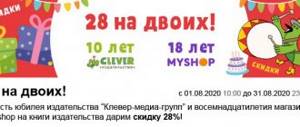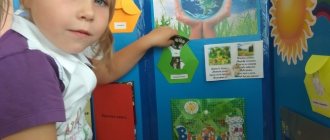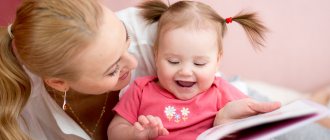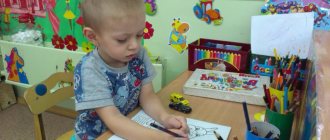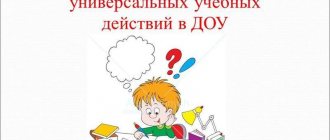“Decorative and applied arts” for children of senior preschool age
The program promotes:
Discovering and developing the child’s creative abilities;
Formation of interest in artistic activities;
Formation of aesthetic taste;
Development of spatial imagination and thinking;
Development of fine motor skills of the hands;
Forming the ability to plan work to implement a plan, anticipate the result and achieve it;
The ability to see, feel, evaluate, and create according to the laws of beauty.
Forms and methods of work
Classes are conducted in a variety of forms, using various methods. The verbal method is used: conversation, story, discussion, game. Practical work is the main form of the lesson. A visual method is used - demonstration of illustrations, presentations, product samples. In conducting classes, group, individual and collective forms of work are used:
— Group (used in practical classes, excursions, in independent work of students, in preparing discussions, etc.);
— Individual (used in preparing and performing creative work);
— Collective (used in general classes).
The theoretical part is given in the form of conversations with viewing of illustrative and visual materials and is reinforced by practical development of the topic. Constant search for new forms and methods of organizing direct educational activities to make work with children more diverse, emotionally and information rich.
Principles of program construction:
1. General cultural (spiritual and moral) orientation of the program.
This principle implies the formation in children of senior preschool age of a system of knowledge and ideas about the surrounding reality: about the connection between a person and the cultural environment he creates, as well as expanding the range of artistic, aesthetic and special knowledge and the formation of the creative capabilities of the individual.
2. From the general to the specific (in the formation of spiritual and moral attitudes) and from the specific to the general (in the formation of specific knowledge and ways of working). Older preschoolers are surprisingly responsive to the emotional impact of nature and art, thanks to which they are able to quite deeply “feel” the complex philosophical ideas that underlie design thinking.
3. Variability of lesson content, variety of specific topics and products.
4. From simpler forms to more complex ones.
Scope of the program: classes are designed for children 4-7 years old, each lasting up to 25 minutes.
Form of work: subgroup. Recruitment of children into the group is carried out regardless of their abilities and skills. Both girls and boys are accepted into the association.
The role of arts and crafts in the development of children's creative abilities
Bibliographic description:
Golubeva, E. S. The role of arts and crafts in the development of children’s creative abilities / E. S. Golubeva.
— Text: immediate // Current tasks of pedagogy: materials of the III International. scientific conf. (Chita, February 2013). - T. 0. - Chita: Young Scientist Publishing House, 2013. - P. 27-29. — URL: https://moluch.ru/conf/ped/archive/67/3455/ (date of access: 10.10.2020). Folk arts and crafts are one of the important means of artistic education for preschool children. Early development of creativity, already in preschool childhood, is the key to future success.
Decorative and applied arts enrich children's creative aspirations to transform the world, develop in children unconventional thinking, freedom, emancipation, individuality, and the ability to peer and observe. In our kindergarten, much attention is paid to introducing children to the origins of folk culture. We live where there is no opportunity to see the direct technological process of making artistic dishes, household items and toys, there are no museums. But we need to give children the joy of creativity, introduce them to the history of folk art, show them the basics of modeling and working with a brush, and introduce them to the figurative stylization of plant and geometric patterns. So that every child feels proud of being a citizen of Russia.
I plan my work to introduce preschoolers to the origins of the country’s folk culture in accordance with the Educational Program of the Preschool Educational Institution, developed on the basis of the comprehensive program “Childhood” edited by V.I. Loginova and T.I. Babaeva. They recommend paying serious attention to introducing preschoolers to the origins of their folk culture countries.
Based on the characteristic need for older preschoolers for self-affirmation and recognition of their creative capabilities, I set the main tasks in working on this topic:
- To form a sustainable interest in the art of the people of Russia and the peoples of other countries;
- Develop artistic and creative abilities in children;
- To form an aesthetic attitude towards objects and phenomena of the surrounding world;
- To foster independence, activity and creativity in the application of previously learned methods of representation, using expressive means.
When creating a subject-developmental environment for the group, we take into account the principles of FGT to the conditions for the implementation of the educational program of the preschool educational institution. I see one of the important tasks of working on this topic as creating a diverse developmental environment for each child in order to give him the opportunity to express himself. In the “art center” I picked up didactic and educational games; folders with silhouette modeling, various illustrated materials on the topics “Gzhel”, “Dymka”, “Khokhloma”, “Filimonovskie”, “Zhostovo”, etc., designed tables with elements of folk paintings, created conditions for independent activities, various illustrated materials, were Authentic items of decorative and applied art and poster models were purchased to develop the ability to plan work to implement a plan. While working, I awaken in the child faith in his creative abilities, individuality, uniqueness, the belief that it is very important to create goodness and beauty, to bring joy to people. Integration of educational areas: “Artistic creativity”, “Cognition”, “Socialization”, “Communication”, “Work”, “Reading Fiction”, “Music”, makes it possible to form a system of children’s knowledge and skills on this topic in an interesting and accessible way.
In my work I adhere to the following didactic principles: visibility, activity and independence, gradualism, individual-personal orientation in the upbringing of preschool children, cognitive expressiveness, success, and communication.
I develop children’s creative abilities when using arts and crafts in the following areas: in preliminary creation of sketches on paper, in thinking through the elements of a pattern, in arranging them on volumes, in creating objects of a decorative nature, the ability to find their own way of depicting and designing an object, in transferring what was planned decorative pattern on products.
I organize all my work within a certain system, using traditional and non-traditional forms. Creativity is an activity in the process of which something new is created as a result of search, use, use of personal experience, as well as the knowledge and skills that the child received during the learning process. The main form of training and education is still thematic and integrated classes, in which a fragmented introduction of cognitive material follows logically with the topic of the lesson. The topics of such classes are aimed at developing children’s sustainable interest in the art of their people, at nurturing a sense of love for their native land, the Motherland
In the pedagogical process I use folk art in three areas:
- interior design of a children's institution, during holidays and leisure.
- introducing children to folk art
- the development of children's creativity, first as a direct reproduction of standard samples, and then - creative comprehension and application
By forming a culture of aesthetic perception in children, I prepare them for creativity, the need to create patterns, decorate objects, develop a desire to consider new patterns and express their evaluative and aesthetic judgments. I practice game forms of learning, visits to our “museum” - “Upper Room” and exhibitions of arts and crafts, entertainment evenings “Russian Fair”, “Maslenitsa festivities”
I try to structure all my work in such a way that every child actively fantasizes, imagines, so that the very beginning of the lesson will be fabulous and exciting. Therefore, I choose different forms of conducting NOD: travel to ancient Russian cities, famous throughout the world for their artistic crafts, for example, “Masters from Nizhny Novgorod”, excursions to a fairy tale, turning into master artists.
I consider the project method to be very effective for developing the creative abilities of older preschoolers. The “Toy from Rus'” project helped children enter the world of Russian folk toys and get acquainted with its characteristic images. As part of the project activities, children were introduced to the images of Zagorsk, Polkhov-Maidan and Semyonovskaya nesting dolls. For the purpose of emotional education, the examination of objects was accompanied by artistic words, nursery rhymes, jokes, figurative words used by folk artists, and the sound of folk music, ditties, and songs. The use of various folklore speech forms makes it possible to attract usually passive, shy children to active participation. I assign an important role to the preliminary examination of a toy or object: examining the object, tactilely tracing its contour with your hand, i.e. using a “hand gesture”.
The educational and gaming project “Traditions and Customs of the Russian People” helped develop children’s interest in oral folk art and folk games. In the project I use elements of museum pedagogy. With the help of multimedia equipment, video excursions are organized for children to the museums of “Russian Life”, “Russian Costume”, “Moscow Kremlin”. The project includes an educational block: interactive classes, didactic games, folk and round dance games, dancing, reading Russian folk tales, etc. and, of course, productive creative activity for children.
When creating a decorative ornament or pattern, I draw children’s attention to the obligatory highlighting of familiar elements and their decoration, alternation of elements, and rhythm. I show that a complex pattern consists of the simplest, familiar geometric parts - a dot, a circle, a ring, a straight and wavy line. If the children find it difficult, I draw their attention to the tables with the elements and their arrangement in the pattern. I try to cheer up the children with proverbs and sayings: “Patience and work will grind everything down,” “A craftsman and a craftsman brings glory to himself and others.”
It is very important to organize creative tasks in order for children to apply the acquired knowledge directly in one activity or another, for example, “The master received a large order and he turned to the children for help.” This becomes a prerequisite for the formation of a sustainable interest in folk art, its necessity and value, respect for the work and talent of the masters.
An important technique in the development of children's creativity is living through a situation of success. I analyze all children’s works in the form of various mini-exhibitions, discussions, round tables, where each child has the opportunity to admire his work with his peers, and in the evening with his parents, to hear kind and so important words for him: approval, encouragement, admiration.
The “Russian Dance” project contributed to broadening children’s horizons in the field of Russian arts and crafts. With its help, the children became acquainted with the main decorative elements in Russian ornament. While creating elements of decorative panels with children (silhouettes of girls, boys, birches and flowers), she sought to develop skills in creative visual activity, taught how to use colors for Russian paintings, use a variety of techniques, materials and tools, and strive to create an expressive image.
When introducing children to folk art, one cannot ignore the national-regional component. The Kola land has been rich in talents since ancient times. Handicraft masters created truly unique works, and even today they delight and amaze with their skill and taste.
Having introduced the children to the living conditions, everyday life, and culture of the indigenous inhabitants of the Kola Peninsula - the Sami, I suggest that the children, plunging into creativity, decorate crafts and silhouettes of national clothes with traditional Sami patterns. Children learn the ability to make patterns based on northern motifs, understand the meaning of the pattern, and distinguish the northern ornament from the ornaments of other nations.
The upbringing and development of a child, including creative development, is impossible without the participation of parents. In order for parents to become like-minded people and create the necessary conditions for the creative development of their children, it is necessary to captivate and provide the necessary methodological assistance.
Parents receive the necessary information at meetings, in individual conversations, consultations, through information stands on the topics: “Teaching to understand beauty”, etc. I designed a sliding folder “Russian festive costume”. Open Days are held fruitfully: “I am an adult, you are a child” and “Beauty Week”, where parents work together with their children. The result of such days are exhibitions of joint creativity, where everyone can admire the creation of their own hands.
The results of the work done allow us to conclude that the use of folk crafts deepens children's knowledge of folk art, develops aesthetic taste, and enriches visual creativity. Most students are able to distinguish between products of different folk crafts and draw patterns based on products of folk arts and crafts. Preschoolers skillfully and freely use not only a brush, but also unconventional methods of creating patterns, independently outline the sequence of making products, and control their own actions with verbal explanation. Children in our group are able to identify means of expression, elements of patterns, color combinations, coloring, and a symmetrical pattern of a composition characteristic of a particular painting. Our little artists actively use their acquired knowledge and skills in independent creative activities.
A deep emotional response is evoked in the soul of a small child when he meets the beauty of folk products, so bright, colorful, joyful; contributes to the cultivation of kindness, hard work, patience, love for the native land, respect for the craftsmen, whose diligence and talent create such beautiful things.
